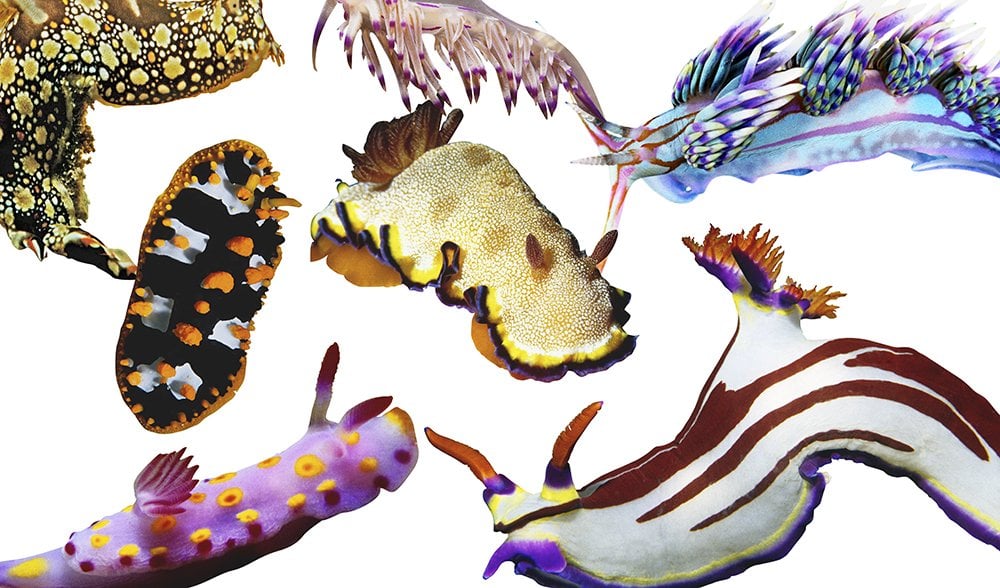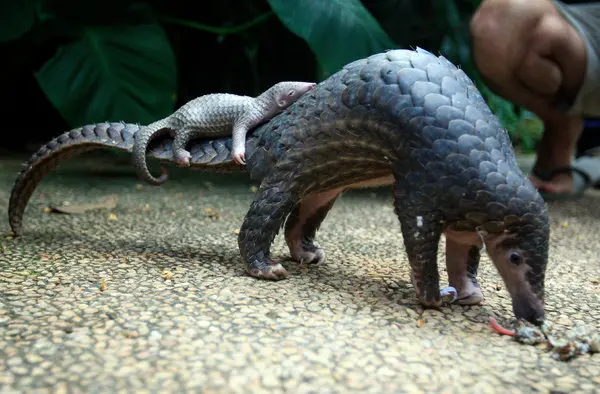What is Biodiversity?
Biodiversity is a measure of variation and richness of living organisms at a particular scale. This can include the diversity of ecosystems, species, or genes in a given system or place. Ecosystem biodiversity refers to Earth’s different ecosystems, such as tropical rain forest, coral reefs, and deserts. Species biodiversity refers to the number of different species within a given ecosystem. Genetic biodiversity is the amount of genetic variation within a single species. Biodiversity is measured in terms of richness and evenness. Species richness is simply a count of the number of different species in a given environment and does not consider population size or species distribution. Species evenness considers the rarety of a given species in a given ecosystem.

Drivers of Biodiversity Loss
Biodiversity is on the decline globally because of human actions. In our earlier reading Rockstrom and colleagues (2009) noted "Species extinction is a natural process, and would occur without human actions. However, biodiversity loss in the Anthropocene has accelerated massively. Species are becoming extinct at a rate that has not been seen since the last global mass-extinction event. Today, the rate of extinction of species is estimated to be 100 to 1,000 times more than what could be considered natural". They classified biodiversity loss as the planetary boundary that was already farthest outside of "safe" levels, driven primarily by changes in land use (Rockstrom et al. 2009).
The drivers of extinction and biodiversity loss are, of course, different for different groups of organisms and in different systems. While many species are threatened by habitat loss, others such as large mammals in the tropics by poaching for meat or high value products like ivory, horn, or scale (Ripple et al. 2016), while still others are threatened by climate change. Some species are vulnerable due to low genetic diversity caused by historical events that whipped out the majority of a population, leaving a reduced genetic pool (such as the African Cheetah, Acinonyx jubatus). For many species, a combination of multiple factors are to blame.
One example of biodiversity loss, that has reserved a lot of media attention, is the decline in giraffe populations(link is external). Over the last 30 years, the population of wild giraffes has decreased by 37%. This decline in the giraffe population is largely due to a combination of habitat loss, poaching, and civil unrest in Africa. Increasing farm lands have led to habit fragmentation within giraffes’ native range. Giraffes are also being hunted for their meat. Giraffe populations have remained stable on game parks in South Africa that sponsor ecotourism. If other African countries can manage their giraffe populations as successfully as South Africa, giraffes have good chance of surviving.
Another case that has recently gotten a lot of media attention(link is external), is the seizure of 9 tons of pangolin scales and 1000 elephant tusks in Hong Kong. Pangolins are an anteater like mammal that will roll up into a ball when threatened. Pangolins are in high demand on both the Chinese and Vietnamese black markets because their scales are thought to have various medicinal properties. Pangolin scales are made from keratin (the same material that is in your finger nails) and have no known medicinal properties. There are eight species of pangolin all of which are endangered and protected under international trafficking laws. In Hong Kong, the smuggling of illegal wildlife products can result in ten years in prison and fines not to exceeded $1.3 million dollars. However, high demand for pangolin scales is prompting the illegal trafficking of thousands of pangolins.

The Giraffe and Pangolin are not alone: several recent reports have come out highlighting the staggering declines in both the number of individual animals on the planet and the loss of species (biodiversity). A WWF report first released in 2016 reported a staggering reduction of vertebrate animal populations by over 60% since the 1970s(link is external). While this number is for the number of individual animals, as populations decline, species are at greater risk of extinction. The report noted that this decline is driven by habit loss, pollution, over harvesting, climate change and invasive species (Carrington 2018). The sixth mass extinction also applies to insects(link is external). Insect numbers are rapidly decreasing in Europe and across the world with one German nature preserve showing a 76% decrease in flying insects. This decrease in insect populations is likely due to a combination of climate change, pesticide usage, and habitat loss (Guarino 2017). The decrease in insect populations is filtering up the food chain and resulting decreases insect eating lizards, frogs and birds as well. Birds are suffering too(link is external), with many reportedly driven to extinction by large scale agricultural production (for food and fuel) and associated drivers. Marine species(link is external) and coral(link is external) are well documented to be at extreme risk from climate change.

For an example of the threat an invasive species can cause towards regional biodiversity watch this PBS video.
Narratives about Biodiversity Loss
Human-Environment Geographers spend a lot of thinking about the way the drivers or causes of Biodiversity are portrayed. The WWF report that reported the 60% reduction of vertebrate animal populations since the 1970s(link is external) has been criticized for tiptoeing around the core drivers of this change - mass production and consumption, especially of food. Geographers have criticized nature documentaries, including excellent and respected productions such as BBC Earth for failing to show the causes of biodiversity loss: instead painting humans (and viewers) as helpless bystanders watching extinction take place but unable to change natures fate. A famous article by Rod Neumann(link is external) (2004) "Moral and discursive geographies in the war for biodiversity in Africa" lays out the way a National Geographic article portrays White hunters are courageous and committed to the conservation of nature (posed in a dignified way in photos, named in the photo caption) while African hunters are portrayed as wasteful, careless and uneducated about the importance of biodiversity (and not named in photo captions). His article calls to attention the ethical issues around the fact that in many African countries anti-poaching gauds have the right to shoot suspected poachers on sight (thereby depriving them of the right to a trial and punishment relative to the crime). He also points out the complicated morals of placing the life of an elephant above that of a human being. Interestingly, a 2019 article by Buzzfeed(link is external) caused a massive scandal by reporting that WWF for having funded forest gauds who committed violent crime while working to protect biodiversity. As you move through the remainder of the course pay attention to the discourses you see on each of our assigned topics. Think about what gets left out and why.
Why is Biodiversity important?
What are the reasons we should protect biodiversity? The reasons we should protect biodiversity, and which ones get used most often are also studied by Geographers (Cronon 1996). Do humans have a moral responsibility to protect nature? Or should we protected it because of the many ways it is essential to our survival and well-being? The Millennium Ecosystem Assessment laid out the many ways biodiversity supports human well-being, calling these functions "Ecosystem Services". An example of these:
“Thirty-five percent(link is external) of the world’s plant crops require pollination by bees, wasps and other animals. And arthropods are more than just pollinators. They’re the planet’s wee custodians, toiling away in unnoticed or avoided corners. They chew up rotting wood and eat carrion. “And none of us want to have more carcasses around,” Schowalter said. Wild insects provide $57 billion worth of six-legged labor in the United States each year, according to a 2006 estimate.” (Guarano 2017).
Additional ecosystems ecological services include: Forests acting as a carbon sink to absorb CO2, coral reefs providing breeding grounds for the fish consumed by local fishermen, and water purification by wetlands. High biodiversity also holds the promise of new medicines and technological innovation. Many of our medicines are based on chemicals produced by plants. Japanese bullet trains were inspired but the shaped of the bills of king fishers (a species of bird) to avoid making loud booms when the exit tunnels. Finally, biodiversity has value that many people enjoy when they engage in recreational activities, such as camping.
Here we have looked at some of the drivers of biodiversity loss. You should be able to link these to many of the past weeks of material in the course. You reading this week will examine strategies to protect biodiversity. As you go through these, think about who is responsible for biodiversity loss, who is responsible for th protection of biodiversity and who bears the burden.
References
Carrington, D. (2018, Oct 29). Humanity Has Wiped Out 60% of Animal Populations Since 1970, Report Finds. The Guardian, Retrieved from https://www.theguardian.com/environment/2018/oct/30/humanity-wiped-out-animals-since-1970-major-report-finds(link is external)
Cronon, W. (Ed.). (1996). Uncommon ground: Rethinking the human place in nature. WW Norton & Company.
Guarino, B. (2018, Oct 15). ‘Hyperalarming’ Study Shows Massive Insect Loss. The Washington Post. Retrieved From. https://www.washingtonpost.com/news/speaking-of-science/wp/2017/10/18/this-is-very-alarming-flying-insects-vanish-from-nature-preserves/?utm_term=.d857c1ba3ee8(link is external)
May, T. (2019, Feb 1). 9 Tons of Pangolin Scales Are Seized in Hong Kong. The New York Times. Retrieved from https://www.nytimes.com/2019/02/01/world/asia/pangolin-smuggling-hong-kong.html(link is external)
McGrath, M. (2016, Dec 8). Giraffes Facing ‘Silent Extinction’ as Population Plunges. The British Broadcasting Corporation. Retrieved from https://www.bbc.com/news/science-environment-38240760(link is external)
Neumann, R. P. (2004). Moral and discursive geographies in the war for biodiversity in Africa. Political Geography, 23(7), 813-837.
Ripple et al. (2016). Bushmeat hunting and extinction risk to the world’s mammals. Royal Society Open Science, 3(10).